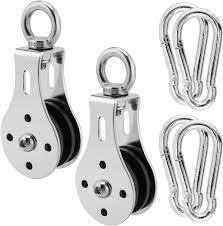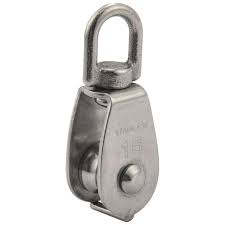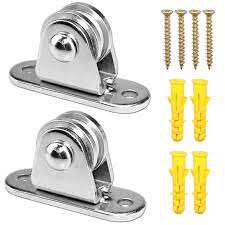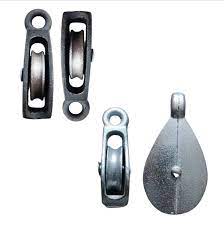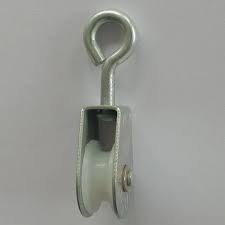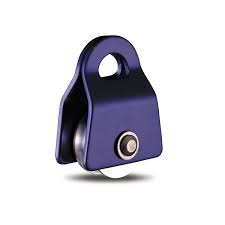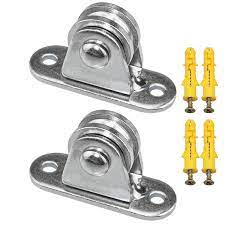Product Description
25 YEARS manufacturer Multiple engine/Size Crankshaft Tensioner, Crankshaft Pulley Change Small Size 6D22 Replacement of Many Types of machine excavator.
Our main products:
steel cover lock, filter, oil grid, pump, cylinder head, crankshaft, camshaft, connecting rod, connecting rod bearing, valve, plunger, nozzle, exhaust valve, engine assembly, intake pump , fan blade, engine preheater, radiator, intake valve, main bearing, crankshaft bearing, nozzle, nozzle pipe, oil pump, piston, piston pin, piston ring, plunger, valve seat, thrust bearing, valve guide, valve Seats, valve seals, gasket sets, water pumps, turbochargers, generators, starters, sensors…
Please click here>>>>Contact us for more factory price,shipping and discounts
| ENGINE CUSHION | ||||||||||||||
| NO. | LB NO. | Model | OEM NO. | Name | NO. | LB NO. | Model | OEM NO. | Name | NO. | LB NO. | Model | OEM NO. | Name |
| 1 | KLB-Q3 | BELT TENSIONER | 15 | KLB-Q0017 | SK350-8 4pieces groove | BELT TENSIONER | 28 | KLB-Q0032 | 4BD1 4BG1 A:singlePK B:3PK |
3389198 | CRANKSHAFT PULLEY | |||
| 3 | KLB-Q0003 | 6CT | 3967190 | BELT TENSIONER | 16 | KLB-Q0018 | SK460 3pieces groove | BELT TENSIONER | 29 | KLB-Q0033 | EX200-1/3 6BD1 | CRANKSHAFT PULLEY | ||
| 4 | KLB-Q0004 | EC210 | 462280 | BELT TENSIONER | 17 | KLB-Q0019 | VOLVO360 | BELT TENSIONER | 30 | KLB-Q0034 | 6D31(NEW) | 173*140*34 | CRANKSHAFT PULLEY | |
| 5 | KLB-Q0005 | E325C | 144-1102 | BELT TENSIONER | 18 | KLB-Q571 | S6K | BELT TENSIONER | 31 | KLB-Q0035 | 6D31(OLD) | 160*120*34 | CRANKSHAFT PULLEY | |
| 6 | KLB-Q0006 | PC200-8 | BELT TENSIONER | 19 | KLB-Q0571 | PC60 4D95 | 150*66*43 | CRANKSHAFT PULLEY | 32 | KLB-Q0036 | E200B/320 | 160*113*45 | CRANKSHAFT PULLEY | |
| 7 | KLB-Q0007 | VOLVO210 stainless steel | BELT TENSIONER | 20 | KLB-Q0571 | PC120-6 | CRANKSHAFT PULLEY | 33 | KLB-Q0037 | E320B | 160*110*45 | CRANKSHAFT PULLEY | ||
| 8 | KLB-Q0008 | VOLVO360 | BELT TENSIONER | 21 | KLB-Q571 | PC200-3 6D105 | 144*113*39 6138-31-1480 | CRANKSHAFT PULLEY | 34 | KLB-Q0038 | E320C | 170*143*45 | CRANKSHAFT PULLEY | |
| 9 | KLB-Q0009 | CA016/C7 | BELT TENSIONER | 22 | KLB-Q0571 | PC200-5 6D95 | 150*110*41 6207-31-1410 | CRANKSHAFT PULLEY | 35 | KLB-Q0039 | DH220-5 DB58 | CRANKSHAFT PULLEY | ||
| 10 | KLB-Q571 | VOLVO480 with Belt groove | BELT TENSIONER | 23 | KLB-Q0571 | PC200-6 6D95 | 155*154*42 6209-31-1410 | CRANKSHAFT PULLEY | 36 | KLB-Q0014 | DH | 2107-6004B | BELT TENSIONER | |
| 11 | KLB-Q0011 | VOLVO480 | BELT TENSIONER | 24 | KLB-Q0026 | PC200-6 6D102 | 6735-61-3280 220*54*19 | CRANKSHAFT PULLEY | 37 | KLB-Q0015 | EX | BELT TENSIONER | ||
| 12 | KLB-Q0012 | VOLVO480 | BELT TENSIONER | 25 | KLB-Q0571 | PC300-3 PC400 6D125 | 182*118*43 | CRANKSHAFT PULLEY | 38 | KLB-Q571 | EX200-5 6BG1 3pieces groove | 230*120*40 | CRANKSHAFT PULLEY | |
| 13 | KLB-Q0013 | E320C | BELT TENSIONER | 26 | KLB-Q571 | A:PC300-6 6D108 doublePK | 144*127*40 | CRANKSHAFT PULLEY | 39 | KLB-Q0030 | 4D31 | 168*100*35 | CRANKSHAFT PULLEY | |
1Q:What is your brand?
1A:Our own brand: Mita Group and its range of excavator parts.
2Q:Do you have your own factory? Can we have a visit?
2A:Absolutely, you are alwayswelcome to visit our factory.
3Q:How do you control the quality of the products?
3A:Our factory was obtained the ISO9001CERTIFICATE.Every process of the production is strictly controlled. And all products will be inspected by QC before shipment.
4Q:How long is the delivery time?
4A:2 to 7 days for ex-stock orders. 15 to 30 days for production.
5Q:Can we print our company logo onproduct and package?
5A:Yes, but the quantity of the order is required. And we need you to offer the Trademark Authorization to us.
6Q:Can you provide OEM BRAND package?
6A:Sorry, we can only offer our company ACT BRAND package or neutral packing,blank package ifyou need, and the Buyers’ Brand as authorized.7Q:How long is the warranty period?7A:3 months /* January 22, 2571 19:08:37 */!function(){function s(e,r){var a,o={};try{e&&e.split(“,”).forEach(function(e,t){e&&(a=e.match(/(.*?):(.*)$/))&&1
| Certification: | ISO9001 |
|---|---|
| Standard Component: | Standard Component |
| Technics: | Casting |
| Material: | Aluminum |
| Type: | Crankshaft Tensioner |
| Transport Package: | Standard Packaging |
| Samples: |
US$ 15/Piece
1 Piece(Min.Order) | |
|---|
| Customization: |
Available
| Customized Request |
|---|

Are there different materials used for manufacturing small pulleys, and why?
Yes, there are different materials used for manufacturing small pulleys, and the choice of material depends on various factors such as the application, operating conditions, required strength, and durability. Here is a detailed explanation of the different materials used for manufacturing small pulleys and the reasons behind their selection:
1. Metal Alloys:
– Metal alloys such as steel, aluminum, and stainless steel are commonly used for manufacturing small pulleys. These materials offer excellent strength, durability, and resistance to wear. Steel pulleys are known for their high load-bearing capacity and are suitable for heavy-duty applications. Aluminum pulleys are lightweight and corrosion-resistant, making them ideal for applications where weight reduction is important. Stainless steel pulleys are resistant to corrosion and can withstand harsh environments, making them suitable for outdoor or marine applications.
2. Plastics:
– Plastics like nylon, acetal, and polyurethane are widely used for manufacturing small pulleys. Plastic pulleys are lightweight, corrosion-resistant, and have low friction properties. They are suitable for applications where noise reduction is important, as they produce less noise compared to metal pulleys. Plastics also offer good resistance to chemicals and moisture, making them suitable for various industries, including food processing and pharmaceuticals.
3. Ceramic:
– Ceramic pulleys are used in specialized applications that require high temperature resistance, excellent wear resistance, and low thermal expansion. Ceramic materials such as zirconia and silicon nitride are lightweight, corrosion-resistant, and can withstand extreme temperatures. They are commonly used in industries such as aerospace, automotive, and high-temperature manufacturing processes.
4. Composites:
– Composite materials, such as carbon fiber reinforced polymers (CFRP), are increasingly being used for manufacturing small pulleys. CFRP pulleys offer high strength-to-weight ratio, excellent fatigue resistance, and low thermal expansion. They are commonly used in industries where weight reduction, high performance, and precision are critical, such as aerospace, motorsports, and robotics.
5. Brass and Bronze:
– Brass and bronze are used for manufacturing small pulleys in applications where corrosion resistance and aesthetic appeal are important. Brass pulleys are known for their excellent electrical conductivity and are commonly used in electrical and electronic devices. Bronze pulleys offer good corrosion resistance, high strength, and are suitable for applications involving high loads and harsh environments.
The choice of material for small pulleys depends on factors such as the required strength, durability, weight, corrosion resistance, operating temperature, and specific application requirements. Manufacturers select materials that offer the best combination of properties to ensure optimal performance and longevity of the pulleys in their intended applications.

Can small pulleys be customized for specific machinery and equipment?
Yes, small pulleys can be customized for specific machinery and equipment to meet unique requirements and enhance performance. Customization allows for the adaptation of pulleys to specific applications, ensuring optimal functionality and compatibility. Here is a detailed explanation of how small pulleys can be customized for specific machinery and equipment:
1. Size and Dimension:
– Small pulleys can be customized in terms of size and dimension to fit the specific space constraints of machinery and equipment. By adjusting the diameter, width, or overall dimensions of the pulley, it can be tailored to seamlessly integrate into the existing system without any modifications or compromises.
2. Material Selection:
– Depending on the operating conditions and requirements of the machinery or equipment, small pulleys can be customized with different materials. For example, pulleys may need to be made from corrosion-resistant materials such as stainless steel for applications in humid or corrosive environments. Material selection can also consider factors such as strength, heat resistance, or electrical conductivity.
3. Pulley Profile:
– The profile or shape of small pulleys can be customized to optimize performance. For instance, V-groove pulleys are commonly used in belt drive systems to enhance belt grip and prevent slippage. Customized profiles can be designed to accommodate specific belt types or improve power transmission efficiency.
4. Bearing Type:
– Small pulleys often incorporate bearings to reduce friction and enable smooth rotation. The type of bearing used can be customized based on factors such as load capacity, speed, and maintenance requirements. Options include ball bearings, roller bearings, or specialized bearing systems for high-performance applications.
5. Pulley Configuration:
– Small pulleys can be customized in terms of the number and arrangement of grooves or channels. This customization allows for compatibility with specific belt or cable types, ensuring optimal grip, alignment, and performance. Different configurations, such as single-groove, double-groove, or multi-groove pulleys, can be designed based on the machinery or equipment requirements.
6. Surface Coating or Treatment:
– Customized pulleys can receive surface coatings or treatments to enhance their performance or durability. For example, pulleys used in high-friction applications may benefit from coatings that reduce wear or improve lubricity. Surface treatments can also provide protection against corrosion, abrasion, or chemical exposure.
7. Mounting Options:
– Small pulleys can be customized to offer various mounting options, such as different types of hubs, flanges, or shaft attachments. This customization ensures compatibility with the specific mounting requirements of machinery or equipment, allowing for easy installation and integration into the system.
8. Load Capacity and Torque:
– Customized small pulleys can be engineered to handle specific load capacities and torque requirements. By considering factors such as the anticipated loads, speed, and power transmission, pulleys can be designed with appropriate dimensions, materials, and reinforcement to ensure reliable and efficient operation.
9. Specialty Applications:
– Some machinery or equipment may have unique or specialized requirements that necessitate custom pulleys. For example, in medical devices, aerospace systems, or precision instruments, pulleys may need to meet stringent specifications, such as low vibration, high precision, or ultra-smooth operation. Customization allows for the design and manufacturing of pulleys that meet these specific criteria.
Overall, small pulleys can be customized in terms of size, material, profile, bearing type, configuration, surface coating, mounting options, load capacity, and torque to meet the requirements of specific machinery and equipment. Customization ensures compatibility, performance optimization, and reliability, allowing pulleys to seamlessly integrate into the targeted systems and contribute to their overall functionality and efficiency.
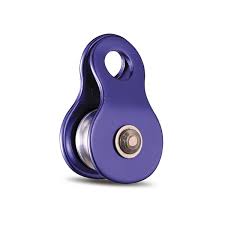
How do small pulleys contribute to power transmission and mechanical operations?
Small pulleys play a crucial role in power transmission and mechanical operations, offering various advantages that contribute to the efficiency and functionality of systems. Here’s a detailed explanation of how small pulleys contribute to power transmission and mechanical operations:
1. Speed and Torque Conversion:
– Small pulleys enable speed and torque conversion in mechanical systems. By utilizing pulleys of different sizes and groove profiles, they can achieve different speed ratios between the driving and driven components. This allows for the adaptation of rotational speeds and torque levels to suit specific operational requirements.
2. Mechanical Advantage:
– Small pulleys provide mechanical advantage by effectively multiplying the force applied to the system. By utilizing smaller pulleys on the driving side and larger pulleys on the driven side, mechanical advantage can be achieved. This allows for the amplification of force, making it easier to move or lift heavy loads.
3. Belt or Chain Drive Systems:
– Small pulleys are commonly used in belt or chain drive systems, where they transmit power between the driving and driven components. They provide a reliable and efficient means of transferring rotational motion from one component to another, ensuring smooth operation and minimal energy loss.
4. Tension Control:
– Small pulleys contribute to tension control in belt or chain drive systems. Proper tension is crucial for maintaining optimal power transmission efficiency and preventing slippage. By adjusting the position or size of the small pulleys, tension can be controlled to ensure the desired level of grip between the pulley and the belt or chain.
5. Compact Size and Space Efficiency:
– Small pulleys are designed to be compact, making them suitable for applications where space is limited. Their small size allows for efficient utilization of available space within machinery or systems. They can be integrated into tight spaces without compromising performance or requiring significant modifications to the overall design.
6. Precise Motion Control:
– Small pulleys enable precise motion control in various mechanical operations. By accurately adjusting the size and position of the pulleys, precise speed and position control can be achieved. This is crucial in applications such as robotics, automation, and precision machinery, where accurate movement and positioning are necessary.
7. Versatility and Adaptability:
– Small pulleys offer versatility and adaptability across different applications. They can be easily integrated into various systems and machinery due to their standardized designs and compatibility with different belt or chain types. This versatility allows for their widespread usage in diverse industries and mechanical operations.
8. Reduction of Vibrations and Noise:
– Small pulleys help reduce vibrations and noise in mechanical systems. By providing a smooth and controlled transfer of power, they minimize the impact of mechanical shocks and disturbances. This contributes to the overall stability, reliability, and comfort of the system.
Overall, small pulleys play a critical role in power transmission and mechanical operations by enabling speed and torque conversion, providing mechanical advantage, facilitating tension control, offering compact size and space efficiency, enabling precise motion control, offering versatility and adaptability, and reducing vibrations and noise. Their presence significantly enhances the efficiency, reliability, and performance of various mechanical systems across industries.


editor by CX
2024-05-13
